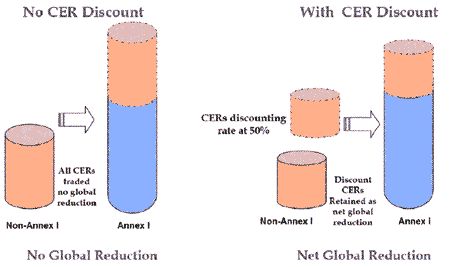Tiempo Climate Cyberlibrary
Green Growth in the Asia-Pacific Region
- Tiempo archive
- Complete issues
- Selected articles
- Cartoons
- Climate treaty
- Latest news
- Secretariat
- National reports
- IPCC
About the Cyberlibrary
The Tiempo Climate Cyberlibrary was developed by Mick Kelly and Sarah Granich on behalf of the Stockholm Environment Institute and the International Institute for Environment and Development, with sponsorship from the Swedish International Development Cooperation Agency.
While every effort is made to ensure that information on this site, and on other sites that are referenced here, is accurate, no liability for loss or damage resulting from use of this information can be accepted.
 |
Rae Kwon Chung, on behalf of the Environment and Sustainable Development Division at the United Nations Economic and Social Commission for Asia (ESCAP), outlines an approach to sustainable economic growth that is being promoted for the nations of Asia and the Pacific. |
| The author is Director of the Environment and Sustainable Development Division. | |
The Asia Pacific region boasts rapid economic growth, arguably a prerequisite for poverty reduction in a region that hosts nearly two-thirds of the world's poor. The countries of Asia and the Pacific are, however, also characterized by both a high population density and the most limited bio-capacity per capita in the world. It is, therefore, increasingly crucial for the countries of this region to focus on sustainable economic growth.
The region cannot continue with an ecologically inefficient pattern of economic growth if it is to achieve Millennium Development Goal 1, poverty reduction, without compromising Millennium Development Goal 7, environmental sustainability. It is no longer possible for countries in the region to maximize their Gross Domestic Product based solely on a "quantity of growth" paradigm and thereby risk repeating the outdated "grow first, clean-up later" approach of already developed countries.
The United Nations Economic and Social Commission of Asia and the Pacific (UN ESCAP) is promoting a Green Growth approach that aims to improve the ecological efficiency and quality of the region's economic growth.
In order to move towards a Green Growth future, we have to internalize ecological costs into our economic performance and thus maximize resource efficiency and minimize the pollution impact of our production and consumption patterns.
Eco-efficiency is not just an environmental concept, it is a critically-necessary economic condition. The Asia and Pacific region cannot sustain its economic expansion without improving its resource efficiency as the prices of natural resources, such as oil, rapidly rise.
UN ESCAP has identified five specific policy options for the Green Growth approach. They are:
- eco-tax reform;
- promotion of sustainable infrastructure;
- demand-side management;
- greening of business; and,
- development of eco-efficiency indicators.
Eco-tax reform would change the tax base from "income" to "pollution", increasing tax on energy consumption while reducing tax on income thus maintaining revenue neutrality. This reform could bring a double dividend of reducing carbon emissions while at the same time promoting growth. Eco-tax reform could then become an important tool for internalizing ecological costs without raising the tax burden on the economy, creating a basis for green economics between climate action and green growth.
Action to tackle the climate problem is not only "the greatest and widest-ranging market failure ever seen," as was pointed out by the Stern Review, but is also a serious failure of ecological efficiency. It is clear that Green Growth, which aims to improve the eco-efficiency of our growth, is, in fact, the ultimate answer to the climate problem.
As the price of oil is now reaching record high levels, energy efficiency, which is a critical component of any response to climate change, is also a key to the energy security that is necessary to sustain the economic growth of the region. Policy tools such as eco-tax reform could start up a virtuous cycle where energy efficiency, energy security, climate action and economic growth are mutually reinforcing each other to positive effect.
If we can make investments in climate actions economically viable, "climate crisis" can be turned into "economic opportunity". If we can properly reform the Clean Development Mechanism under the Kyoto Protocol, so that investment in climate actions can be made commercially viable, then excess capital flowing around the world looking for investment opportunities, mostly in stocks and real estate, will naturally flow to climate actions.
 |
|
Discounting Certified Emission Reductions (CERs)
Source: UN ESCAP |
If we can be creative enough to sell only a certain portion of carbon credits from the Clean Development Mechanism (see figure above), then unsold portions will stand as a net global emission reduction. If we can generate such a net global reduction without imposing any target on developing countries, then one of the most serious stumbling blocks in the negotiations for a post-2012 climate change regime will be removed.
Asian and Pacific nations are amongst those which suffer the most from climate change-related disasters. The region cannot shy away from taking proactive climate actions. Climate action is an essential component of Green Growth. UN ESCAP has been leading regional consultations at the Gleneagles Dialogue of the G-8 Summit for a Low Carbon Society and has proposed concrete and innovative policy options and ideas to be reviewed by the member states through policy consultations and publications in international journals.
The nations of the Asia-Pacific region have acknowledged the importance of a Green Growth approach. The Government of China announced six measures for Green Growth and President Hu Jintao called on developed countries to support the Green Growth of developing countries at the G-8 Summit in June 2007. The President of the Republic of Kazakhstan also pointed out the need to pursue Green Growth. And, at the end of 2007, the Government of Cambodia decided to establish a National Committee on Green Growth.
There are many more encouraging signs that countries in the region are eager to adopt ecologically efficient growth patterns. UN ESCAP is committed to further disseminate the message of Green Growth in the region and lead the age of green economics and green development in Asia and the Pacific.
Further information
Simon Hoiberg Olsen, Environment and Sustainable Development Division, UN ESCAP, 5th Floor, United Nations Building, Rajadamnern Nok Avenue, 1200 Bangkok, Thailand. Email: olsens@un.org. Web: www.greengrowth.org.
On the Web
Read more about market mechanisms for climate action in articles by Rae Kwon Chung published in Climate Action (0.2Mb download) and Climate Policy.
Bright Ideas

General Electric plans to cut solar installation costs by half

Project 90 by 2030 supports South African school children and managers reduce their carbon footprint through its Club programme

Bath & North East Somerset Council in the United Kingdom has installed smart LED carriageway lighting that automatically adjusts to light and traffic levels

The United States National Oceanic and Atmospheric Administration and the American Public Gardens Association are mounting an educational exhibit at Longwood Gardens showing the link between temperature and planting zones

The energy-efficient Crowne Plaza Copenhagen Towers hotel is powered by renewable and sustainable sources, including integrated solar photovoltaics and guest-powered bicycles
El Hierro, one of the Canary Islands, plans to generate 80 per cent of its energy from renewable sources

The green roof on the Remarkables Primary School in New Zealand reduces stormwater runoff, provides insulation and doubles as an outdoor classroom

The Weather Info for All project aims to roll out up to five thousand automatic weather observation stations throughout Africa

SolSource turns its own waste heat into electricity or stores it in thermal fabrics, harnessing the sun's energy for cooking and electricity for low-income families

The Wave House uses vegetation for its architectural and environmental qualities, and especially in terms of thermal insulation

The Mbale compost-processing plant in Uganda produces cheaper fertilizer and reduces greenhouse gas emissions

At Casa Grande, Frito-Lay has reduced energy consumption by nearly a fifth since 2006 by, amongst other things, installing a heat recovery system to preheat cooking oil
Updated: May 15th 2015